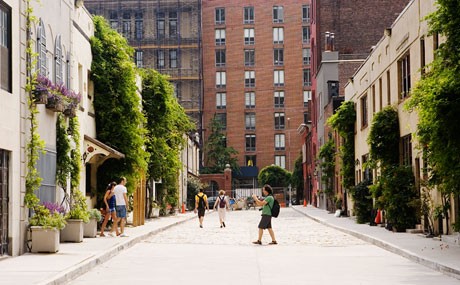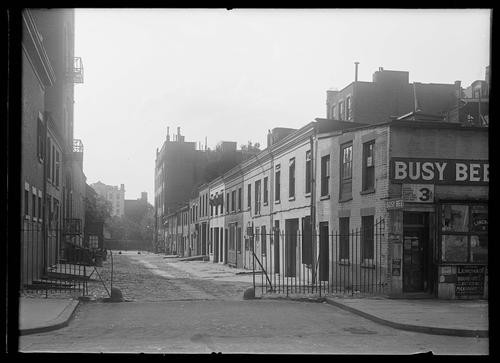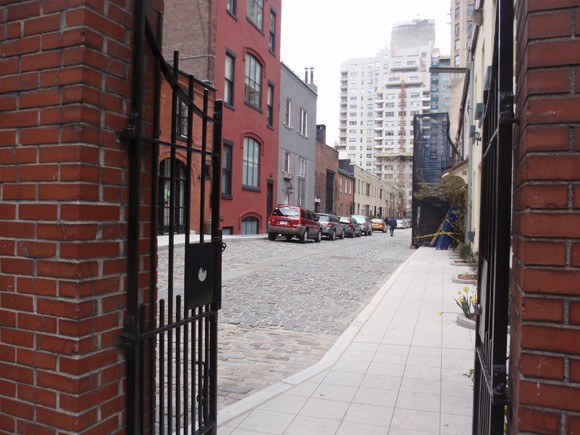Washington Mews
Introduction
Text-to-speech Audio
Images
Washington Mews as it appears today

The alley as it appeared in the early 1900s

A peek through one of the gates

Backstory and Context
Text-to-speech Audio
The curious little alley known as Washington Mews traces its history back to 1801, when a sea captain, Richard Randall, died. He left the land where the Mews is as well as some surrounding parcels for the establishment of a home for elderly sailors, Sailors Snug Harbor. Snug Harbor was eventually constructed on Staten Island, where it remains, although it has long been a cultural institution rather than a sailors' home. Randall's plans were not followed, however, and the land was leased to people as they built large homes near Washington Square, with the proceeds used to fund the construction of Snug Harbor.
As two rows of homes were being built, lesses constructed an alley between the two which would be used for stables. Building a private alley for the construction of stables was something of an oddity in New York City but was a common practice in other large cities, such as London. The houses on the north side of the Mews were built (as stables) from 1829 to 1833; their placement allowed for abundant garden space for the elegant homes then being built near the Square. Over time, the stables were converted into residences ("mews" refers to stables that have been converted into homes), some of which were home to a number of the city's well-heeled residents. Among the early residents of the Mews were John Taylor Johnston, the first president of the Metropolitan Museum of Art, and the architect Richard Morris Hunt. Gertrude Vanderbilt Whitney, founder of the Whitney Museum, also lived there.
By the twentieth century, the Mews became a popular neighborhood for writers and artists. The buildings were open and airy and provided ample working space for artists, who increasingly flocked to the Village because of its offbeat, bohemian character. By 1939, the area was so popular that a row of two-story houses built to look like converted stables were built across the street from the original structures. Edward Hopper had a residence and studio there, and the novelist John Dos Passos lived at 14A.
In 1949 or 1950, New York University leased the property from Sailors Snug Harbor. The university still holds the lease to the Mews, and most of the houses are used for faculty housing or for other university purposes. Rising crime in the 1980s prompted the university to install a six-foot high gate at the Fifth Avenue end of the alley, but the gates remain open during the day, and many visitors to the Village wander down the quaint street, unaware that it is actually private property.
Sources
Streetscapes: Washington Mews; Gates for Protection Against the Threatening City Outside , New York Times . November 20th 1988. Accessed December 1st 2020. https://www.nytimes.com/1988/11/20/realestate/streetscapes-washington-mews-gates-for-protection-against-threatening-city.html.
Robledo, Johanna . Washington Mews: Discover the Secrets of Manhattan's Most Famous Private Street , Brick Underground. October 29th 2015. Accessed December 1st 2020. https://www.brickunderground.com/blog/2015/10/washington_mews
Then & Now: Washington Mews , Village Preservation . April 19th 2013. Accessed December 1st 2020. https://www.villagepreservation.org/2013/04/19/then-now-washington-mews/.
